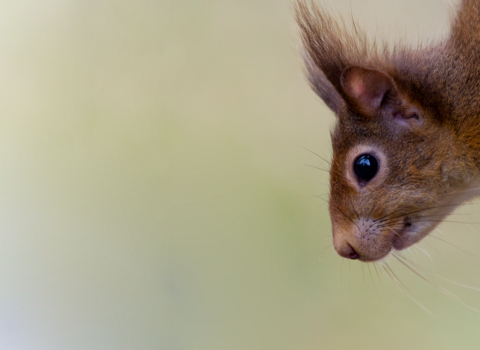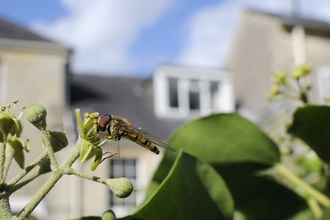
Hornet Mimic Hoverfly © Dave Riseborough

Hornet Mimic Hoverfly ©Joan Burkmar
Hornet mimic hoverfly
With black-and-yellow markings, the hornet mimic hoverfly looks like its namesake, but is harmless to us. This mimicry helps to protect it from predators while it searches for nectar.






